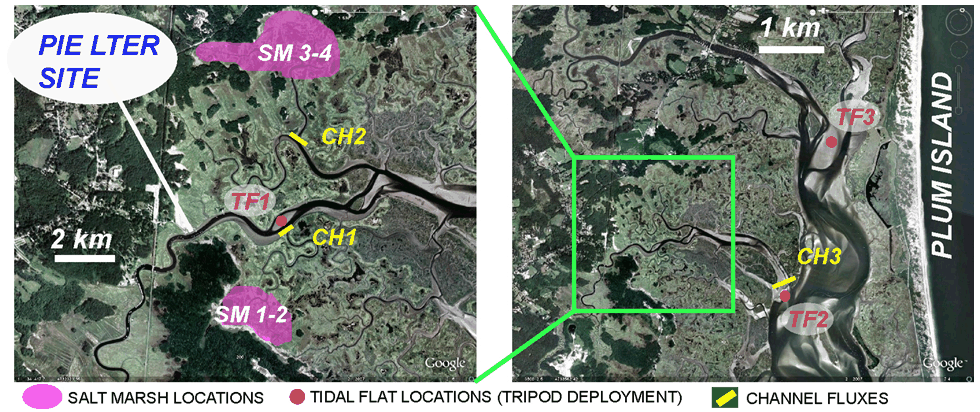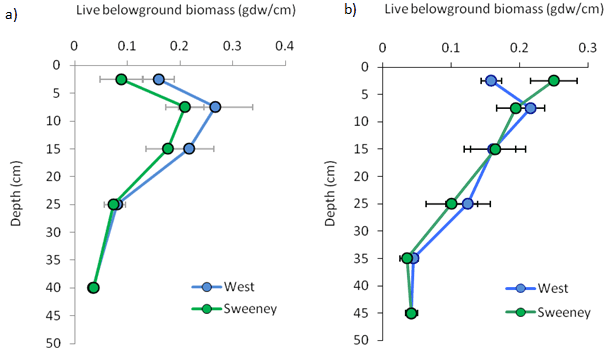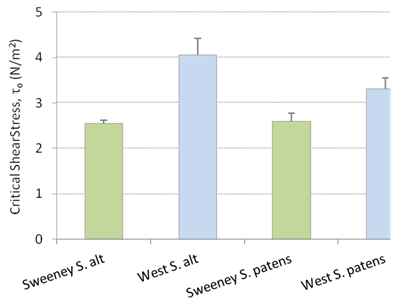Salt Marsh study
(Lead Investigators: Deegan, FitzGerald)
The research plan for the salt marsh study includes measurements of:
- Topographic and geomorphological features
- Soil geotechnical properties
- Soil biogeochemical properties
 Study site and location of field work activities. Two first-order tidal channels and marsh platform areas (SM 1, 2) have been nutrient enriched and 2 similar areas are used as control sites (SM 3, 4). Two new sites are proposed for nutrient enrichment starting in 2009 (not shown on map). CH1, CH2, CH3 are the three channel cross section that we propose to instrument to quantify the biogeochemical fluxes between marshes and tidal flats (CH1 drains SM1-2 while CH2 drains SM3-4). TF1, TF2 and TF3 are the locations at which the tidal flat substrate experiments will be conducted (with tripod deployment). They represent three typical tidal flat environments (interchannel flat, deep flat, and shallow flat).
Study site and location of field work activities. Two first-order tidal channels and marsh platform areas (SM 1, 2) have been nutrient enriched and 2 similar areas are used as control sites (SM 3, 4). Two new sites are proposed for nutrient enrichment starting in 2009 (not shown on map). CH1, CH2, CH3 are the three channel cross section that we propose to instrument to quantify the biogeochemical fluxes between marshes and tidal flats (CH1 drains SM1-2 while CH2 drains SM3-4). TF1, TF2 and TF3 are the locations at which the tidal flat substrate experiments will be conducted (with tripod deployment). They represent three typical tidal flat environments (interchannel flat, deep flat, and shallow flat).
Results
1) Analysis of historical aerial imagery reveals that while tidal creek length and drainage density has remained constant over time (including both natural and anthropogenic creeks), marsh pool area has increased.

2) In contrast to results reported last year, Spartina patens and Distichlis sp. areas proximal to the creeks have greater live belowground biomass in nutrient enriched sites compared to the control, but only to 5 cm depth. This is in contrast to creek-bank Spartina alterniflora, which shows live belowground biomass is significantly lower at the nutrient enriched site compared to the control down to 20 cm depth.

3) Critical shear stress determined using a CSM was greatly reduced at the nutrient enriched site (Sweeney) compared to the control (West). This was true at both creek-bank Spartina alterniflora sites, as well as creek-proximal Spartina patens and Distichlis sp. sites.

